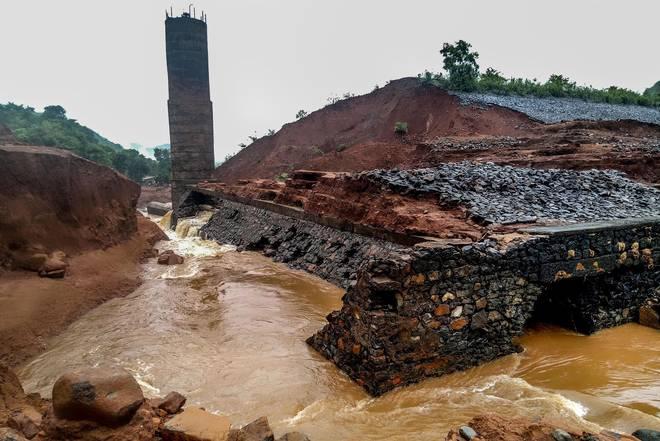Failed Dam Management Behind Floods in Maharashtra, Say Experts

Image Courtesy: The Hindu
Three districts in Maharashtra, Sangli, Satara and Kolhapur have been under the siege of water for the last five days. This is the worst flood in the state since 2005, with the Highest Flood level (HFL) being crossed at eight sites, four in Maharashtra and four in Karnataka. Heavy rainfall in these districts which are adjacent to the Sahyadri range has led to rise in water levels. As per Indian Meteorological Department figures, till 8 AM on August 8, 480 mm, 1028 mm and 2068 mm of rainfall had been registered in Sangli, Satara and Kolhapur, respectively. This exceeds almost 70% of the normal level. The excess rainfall resulted in speedy and heavy water flow in all the rivers in these districts, leading to lakhs of people being stranded inside their homes and a complete shutdown of people’s movements.
South Asian Networks on Dams, Rivers and People (SANDRP), an organisation working on rivers and dams has come up with a report which clearly states that ‘the dams in these three districts started releasing a large quantity of water which played a major role in creating flood disaster’. A report written by experts Himansu Thakkar and Parineeta Dandekar, is up on the SANDRP website. In the report, experts cite possible explanation from dam authorities (state governments in both states) and raise questions to those explanations. “The dam operators are likely to turn around and say that ‘but the dams were full and we had no option but to release the water’. But the question is why were the dams full when monsoon is just about halfway through?” the experts question.
Also read: Maharashtra Floods: Thousands Stranded in Kolhapur and Sangli, Inadequate Relief from Govt
In a detailed analysis the SANDRP report says, “If we look at the graph below, we see that three of the big dams in this region, namely Koyna, Radhanagari and Warna were almost 100% full by August 5, when the current flood wave started. The flood disaster has exactly coincided with the dams getting full by August 5, 2019? Why did the dams not start releasing water from say July 25, 2019, when Koyna and Warna dams were only 50% full? The Radhanagari dam should have started releasing water even earlier as that dam was already close to 80% full by July 25. If these dams had started releasing water even earlier, they would have had sufficient space during the first week of August 2019, when the districts received heavy rainfall and that would have helped to reduce floods.”
The experts also commented that the state government has not learned any lesson from past. Reports suggest that the capacity of catchment areas of dams to hold, absorb, store the rainwater and recharge the groundwater is reducing due to mindless pursuit of development in this area. The report mentions the need to improve such development strategies. The report also suggests that at the immediate level, water stored in the dams need to be released judiciously to make way for possible high rainfall in the coming weeks. Also, the rules need to be put in public domain for greater transparency.
Get the latest reports & analysis with people's perspective on Protests, movements & deep analytical videos, discussions of the current affairs in your Telegram app. Subscribe to NewsClick's Telegram channel & get Real-Time updates on stories, as they get published on our website.
























